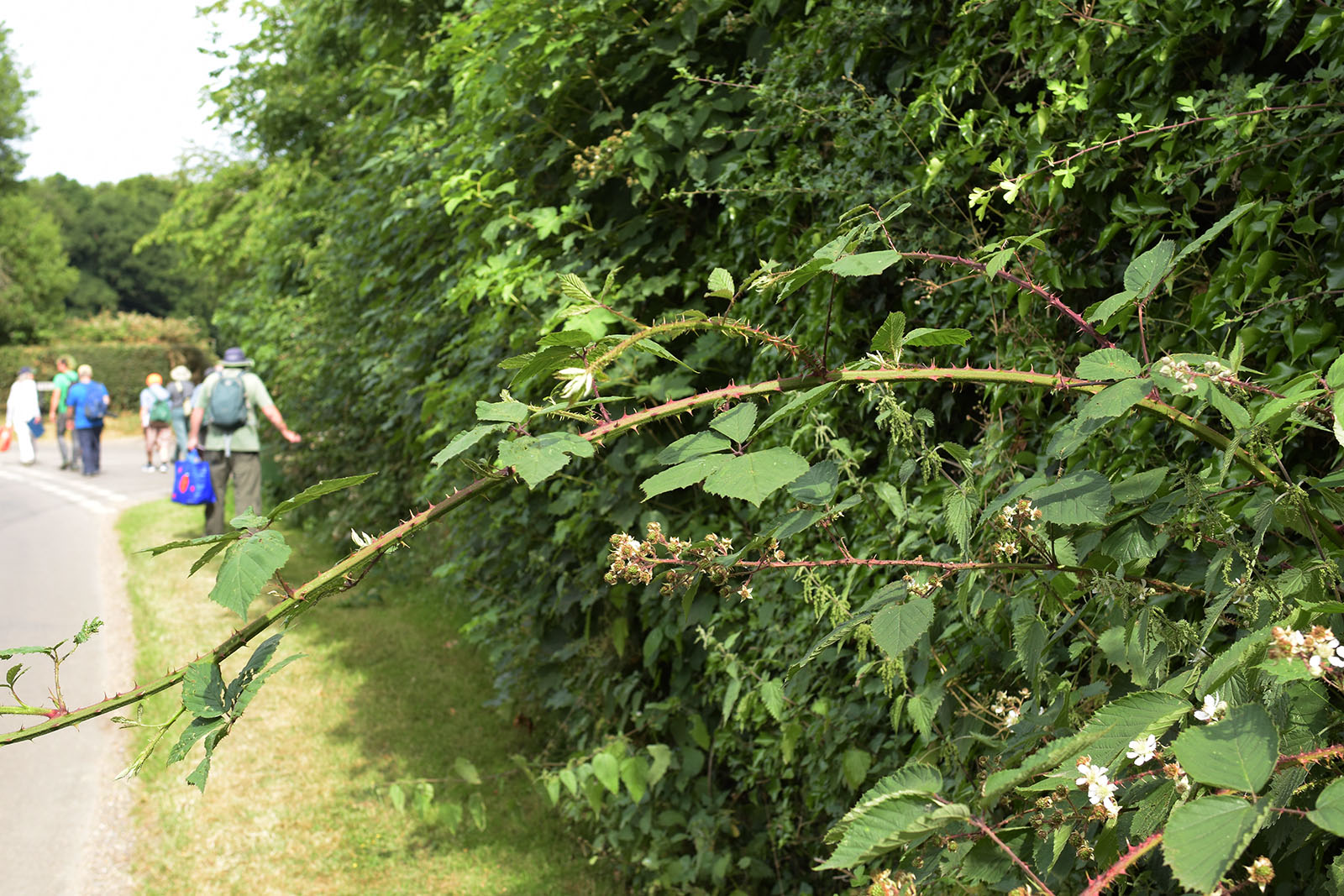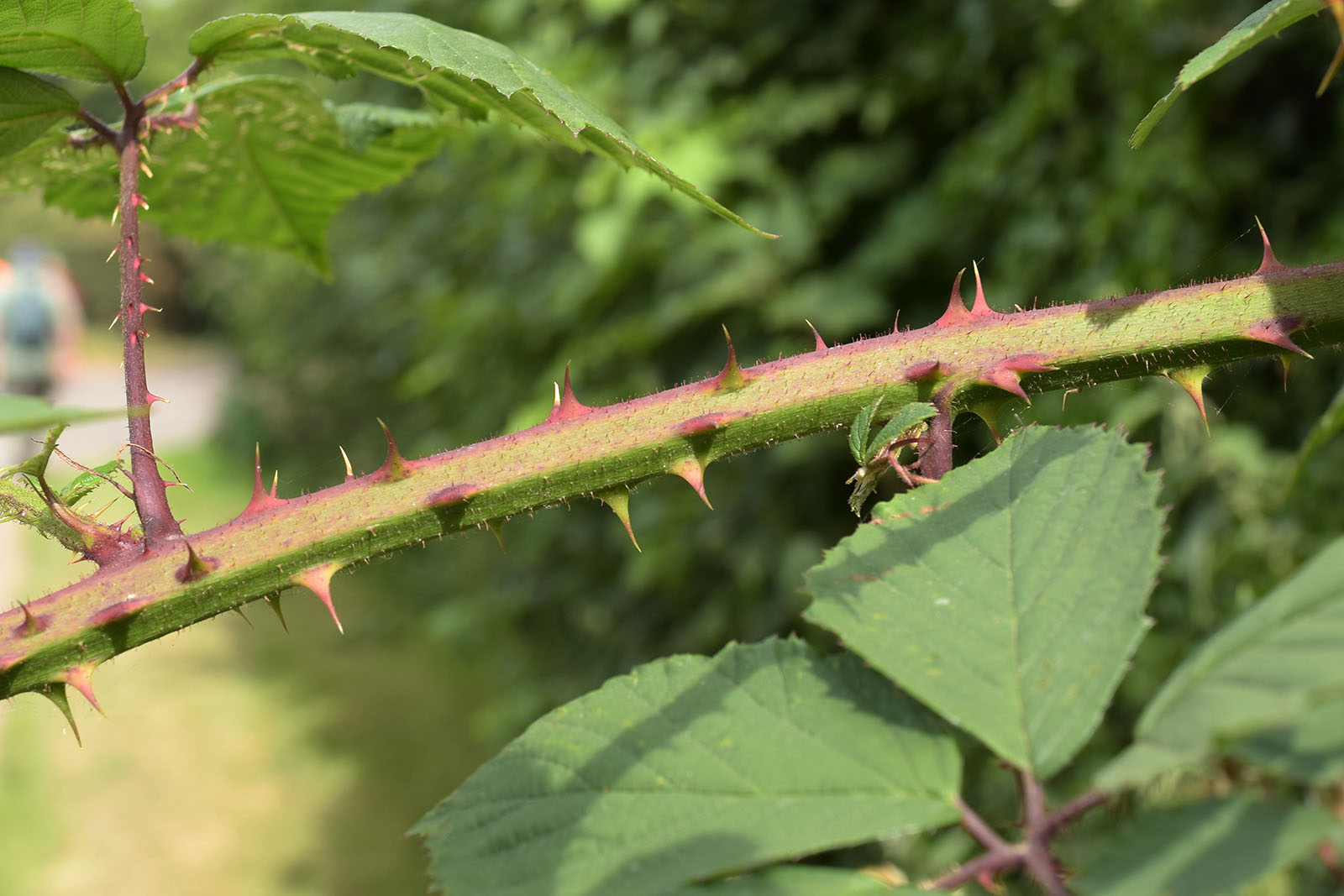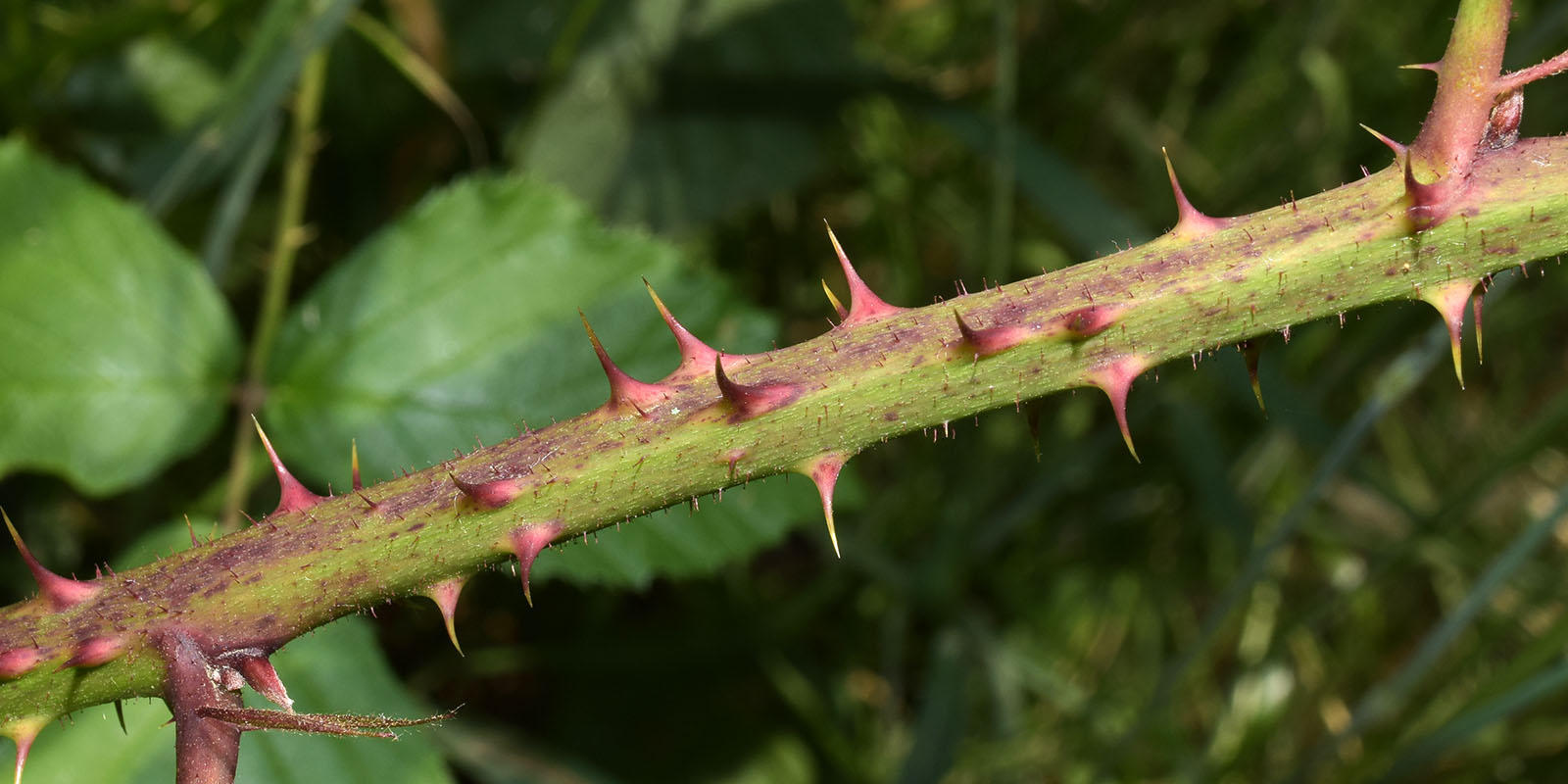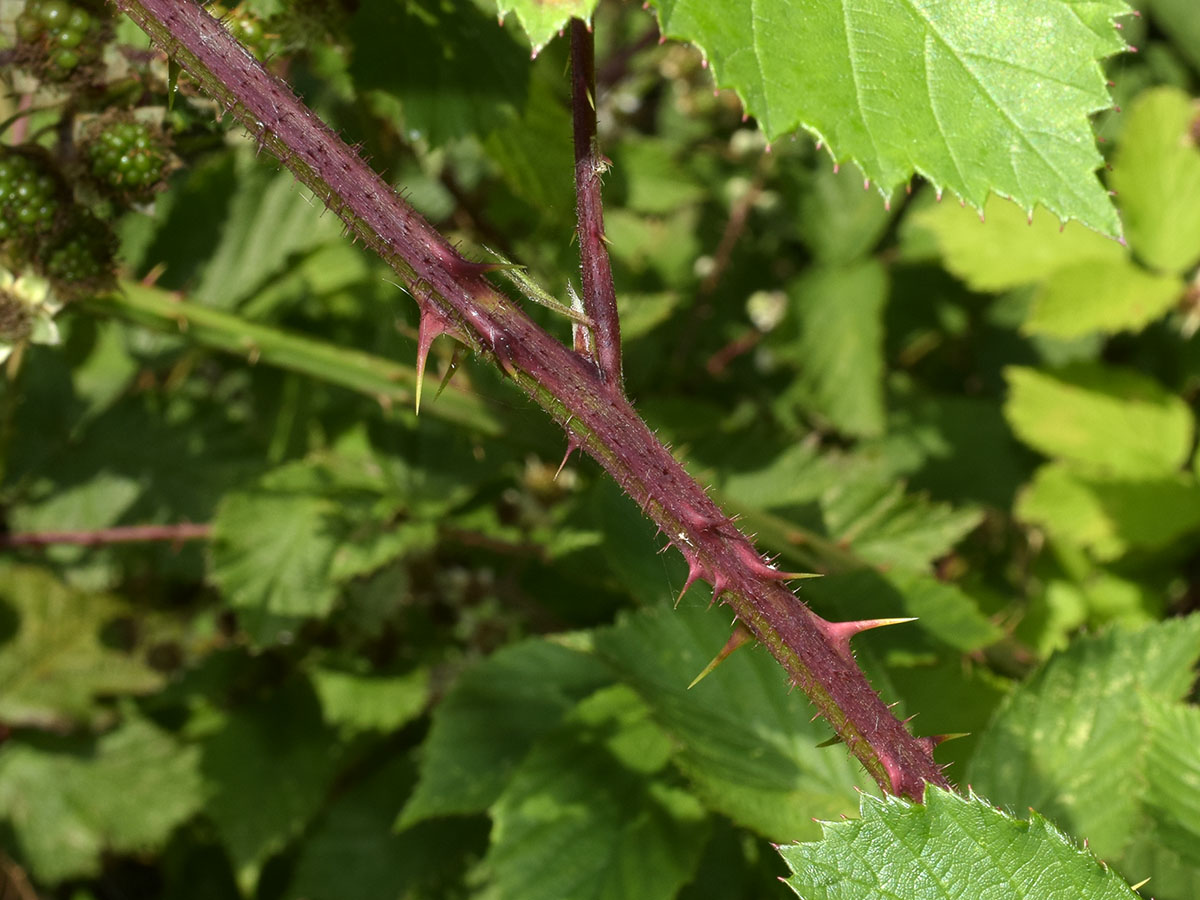
Rubus echinatoides – Series Radulae
back to Alphabetical index · Taxonomic index
A distinctive member of the series, with notched white petals, long stamens, jagged leaf margins and glabrous stems. It is believed to be endemic to Britain and Ireland with the centre of distribution in Lancashire and Yorkshire, but it is also frequent in eastern Scotland, extending north to Aberdeenshire, and also over parts of the English Midlands and central southern England. It is scattered elsewhere but absent from the south of Ireland and south-west England. It is a moderately robust, tall arching species which seems to prefer more open situations along hedgerows, roadsides and in heathland. Most of these photographs were taken during a BSBI Rubus meeting in Buckinghamshire in 2017.
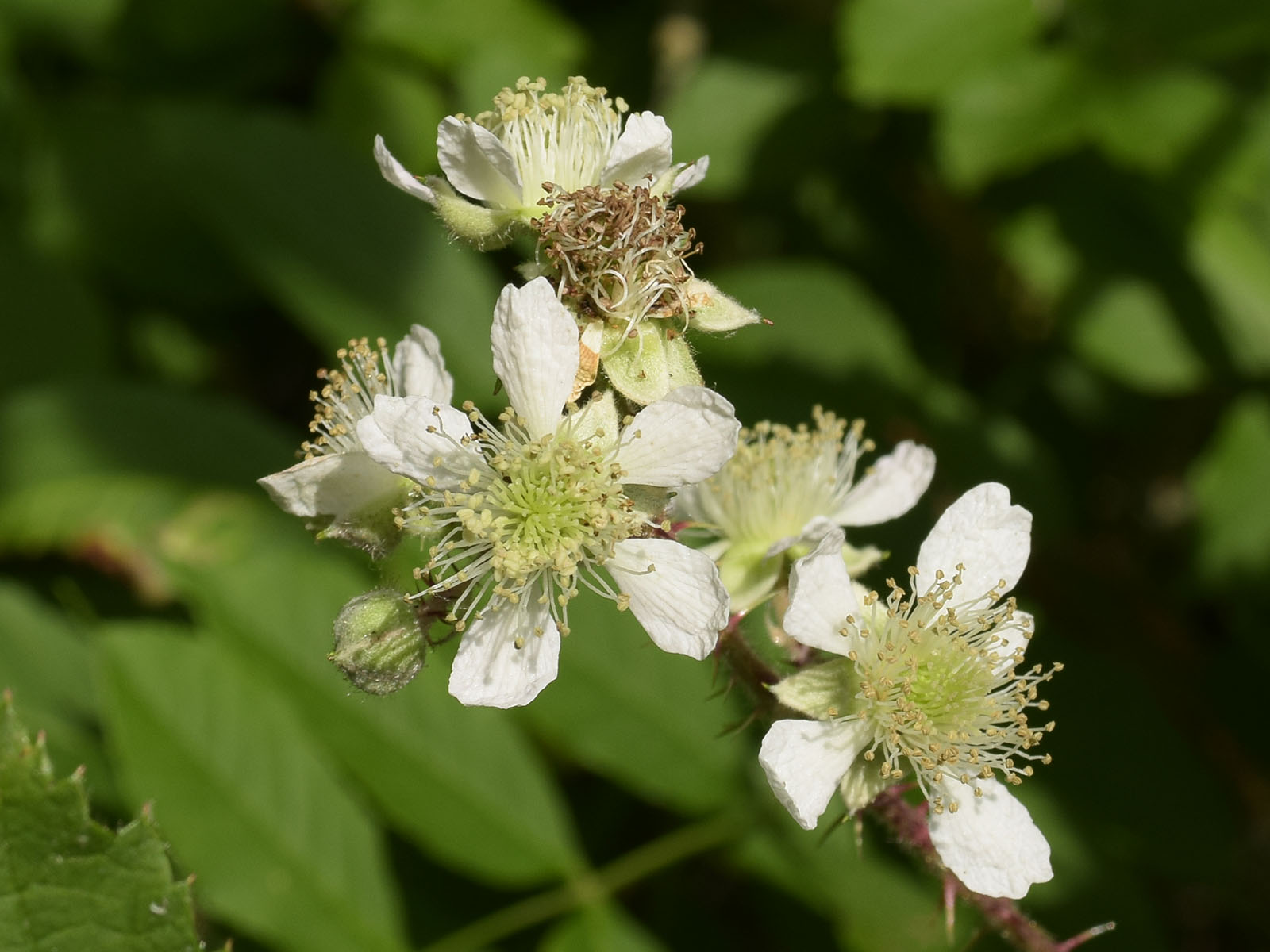
The panicle consists of a compact terminal head of flowers, often on short, widely divergent branches, with short strongly ascending branches lower down. Leaves on the panicle are 3-foliate below with one or more single leaflets above. The rachis is straight, hairy above and glandular, with numerous small fine patent or declining prickles and some much longer ones which are sometimes more strongly declining or bent. The contrast between the deep reddish colour of the rachis and the yellow ends of the prickles is quite striking on the rachis and the first-year stems of this species.
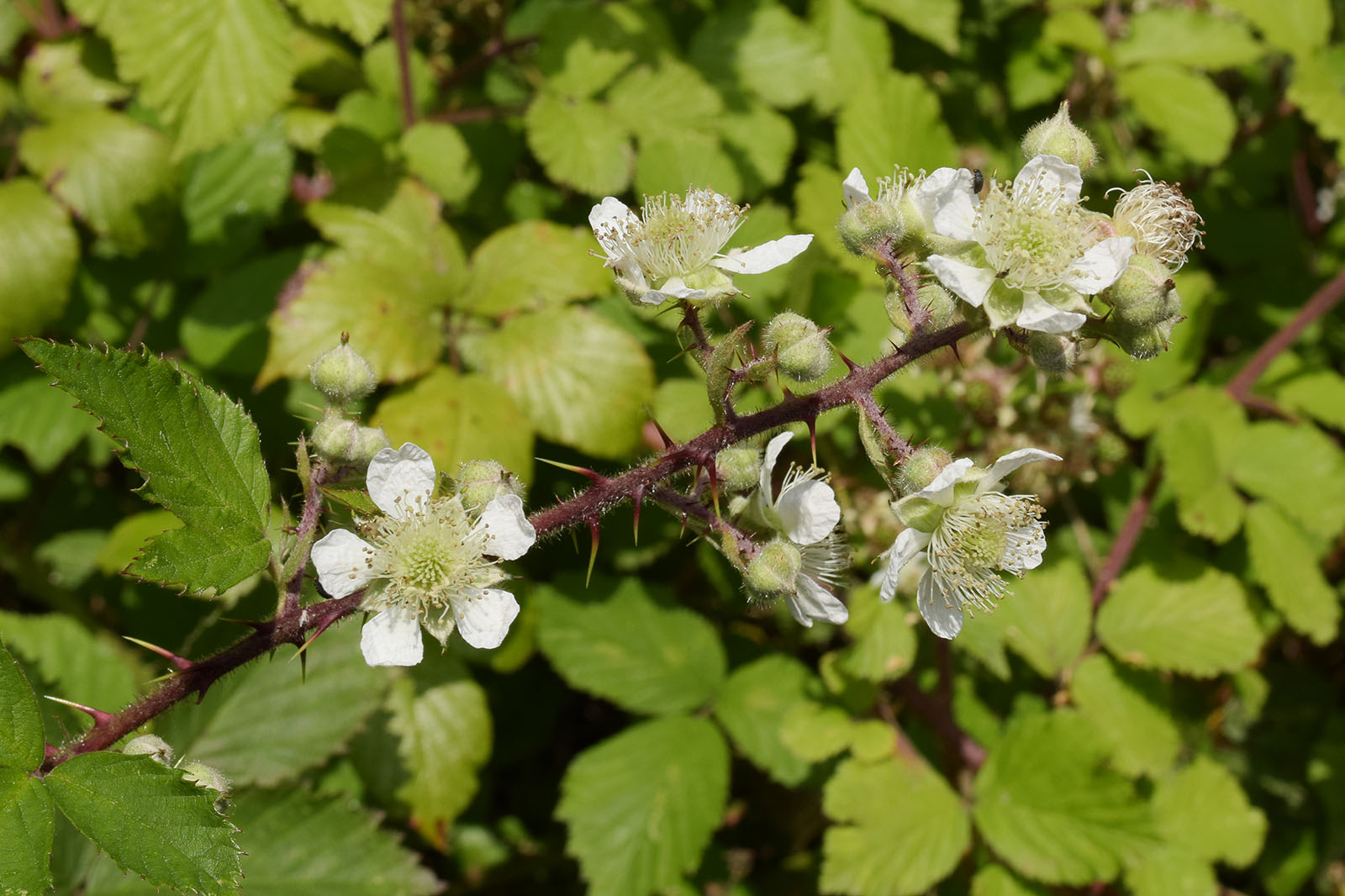
Flowers are medium-sized, c.2.5cm in diameter. Petals are c.11-12 x 6-7mm, usually white but rarely pale pink, usually obviously notched, elliptic-obovate (either quite narrow or fairly broad) and always widely spaced, revealing the patent, sharply-pointed sepals between. The stamens are distinctly longer than the styles, which are green to pale yellow in colour. Carpels are glabrous (to reportedly slightly hairy) and the receptacle is hairy. Sepals are felted with only relatively short-stalked red-tipped glands which are not particularly conspicuous.
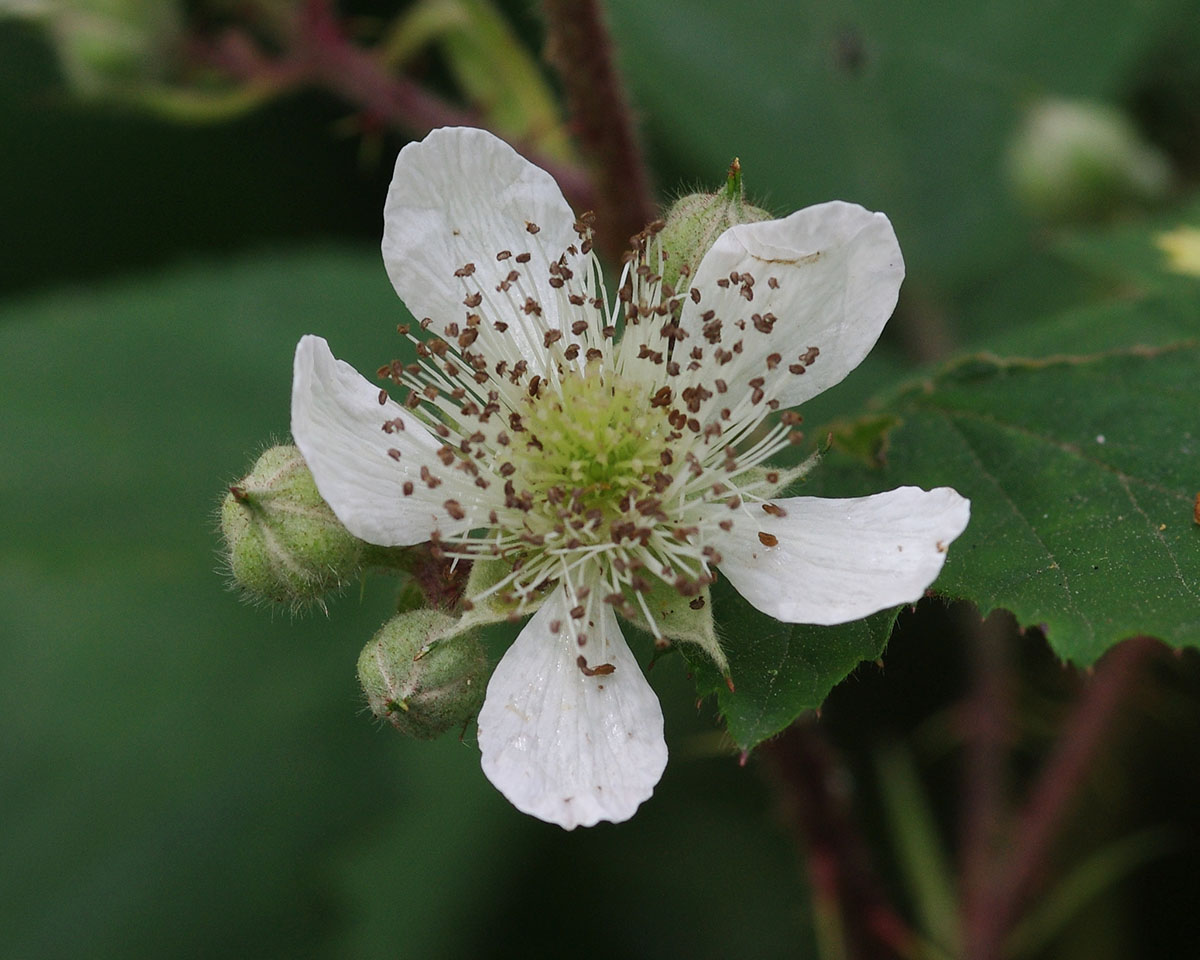

The sepals remain patent to loosely reflexed as the fruit starts to develop.

Leaves have 3-5 leaflets, those with 5 leaflets being clearly pedate (basal ones arising from the stalks of the laterals). They are mid-green in colour, glabrous above, matt or slightly shiny when young, flat (not strongly pleated) with thin-looking midrib and secondary veins. The terminal leaflet is c.9 x 6-8cm, broadly obovate, with straightish sides above making an angle of nearly 90 degrees and a cuspidate to acuminate tip and an entire or emarginate base. The margins are sharply biserrate, which when well developed (see photo of underside below) and combined with a slight undulation give the leaflets a distinctive appearance (somewhat similar to R. echinatus, which is usually a pink-flowered species).
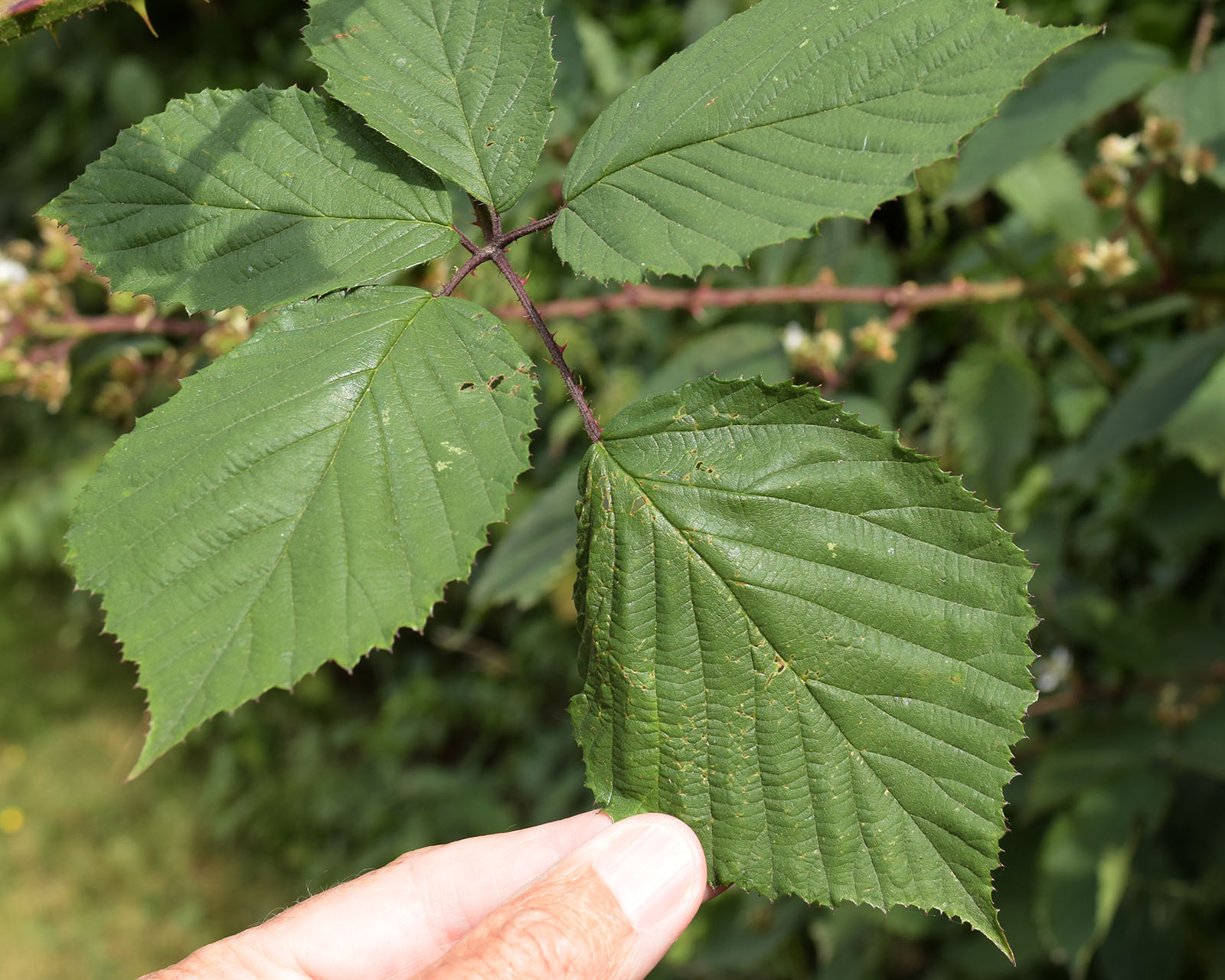
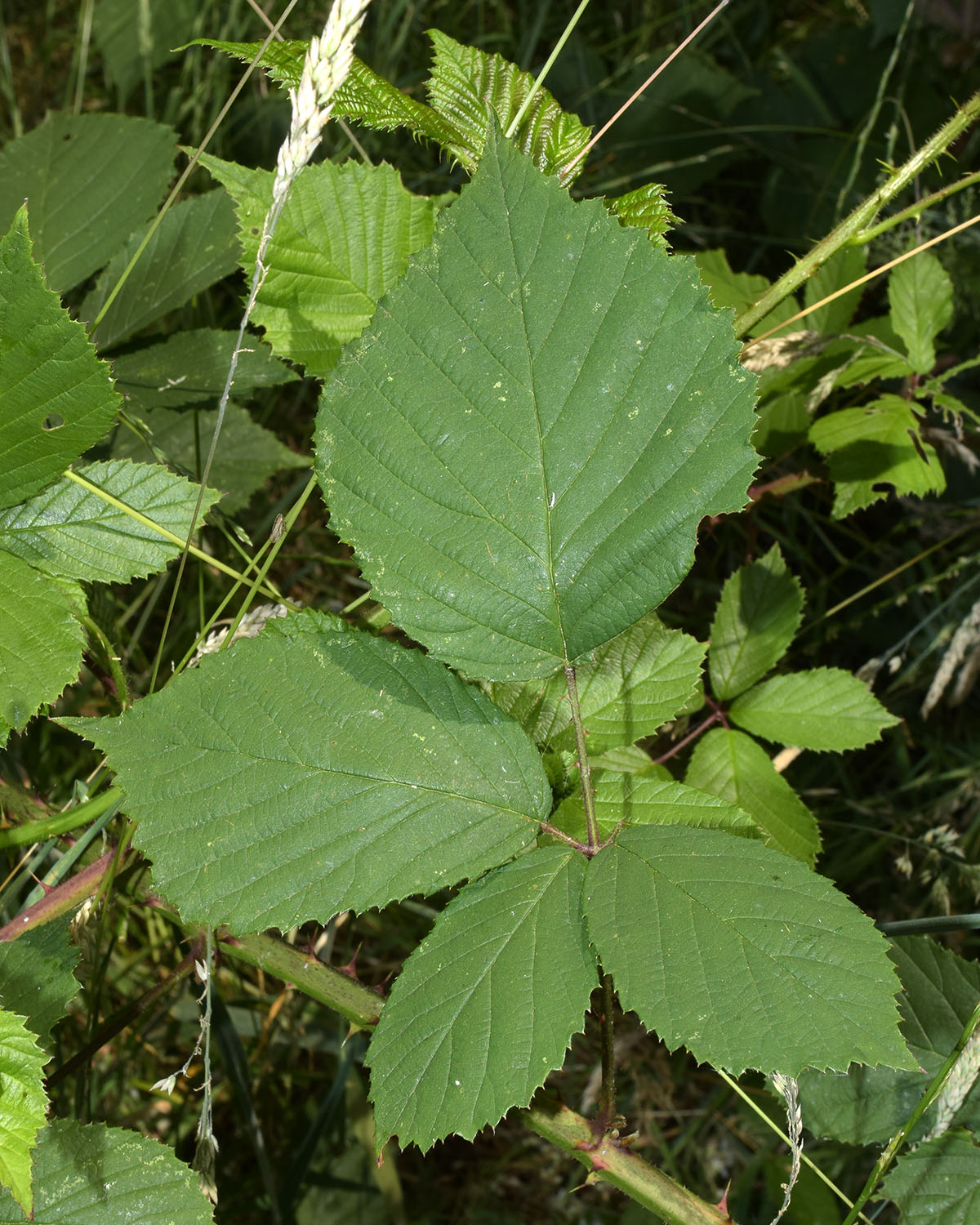
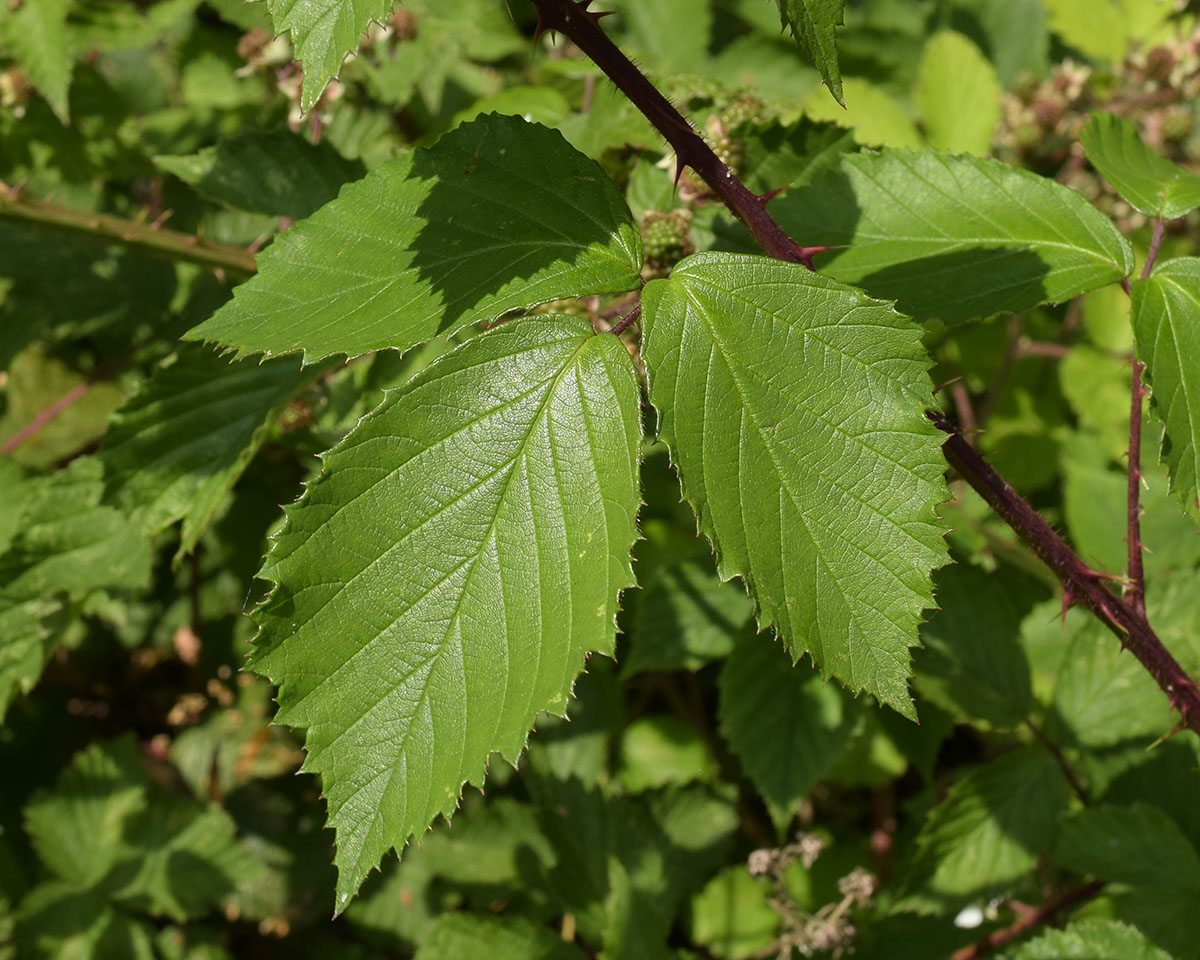
Leaflets are sparsely to densely hairy below and can be whitish below on the panicle leaflets.
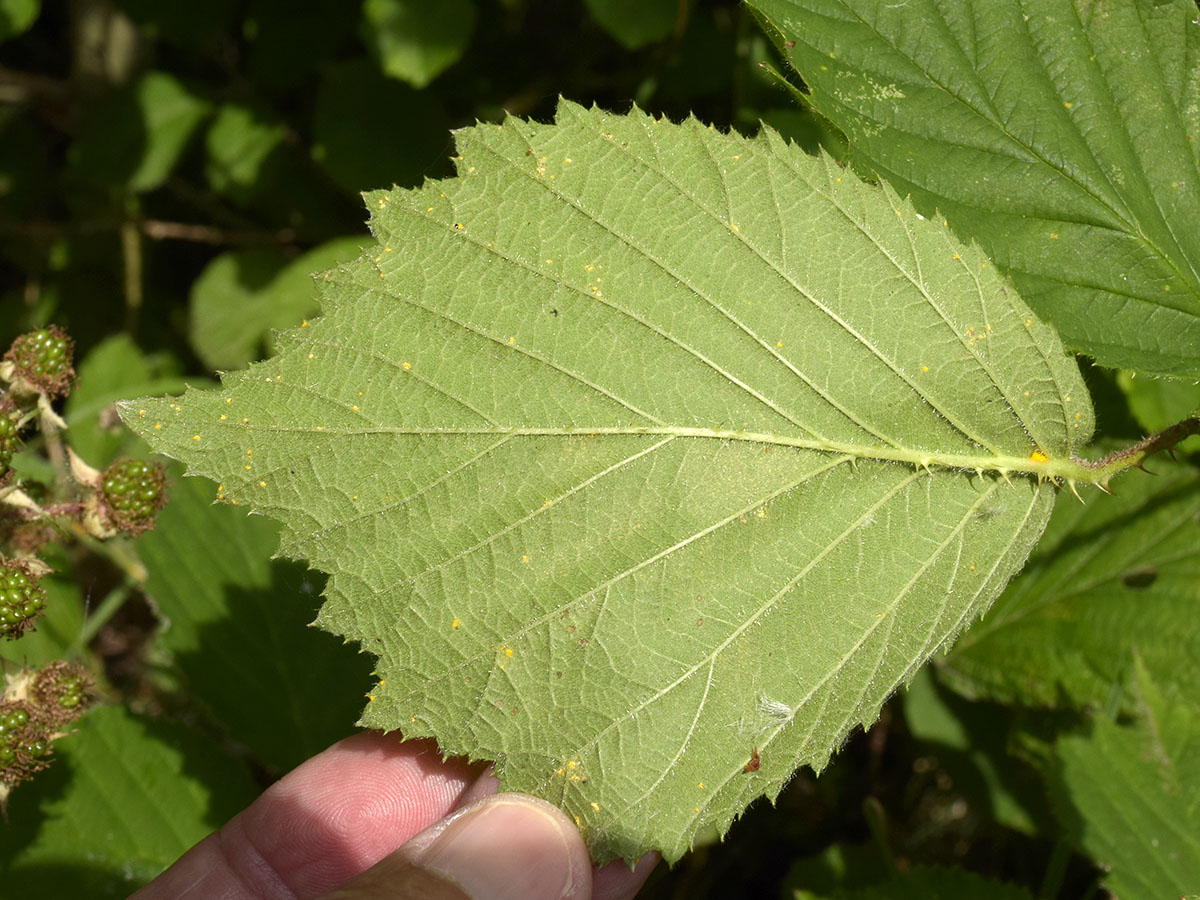
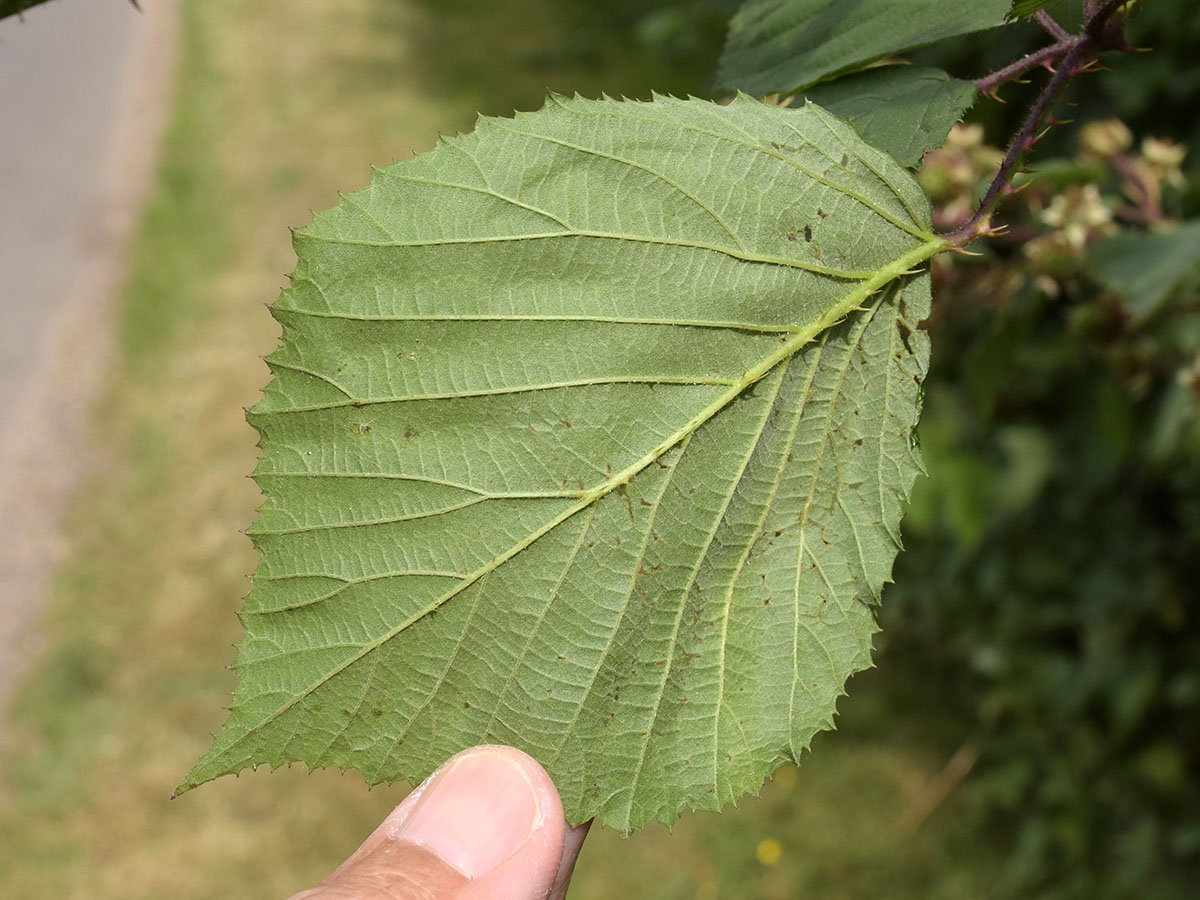
The first-year stem (primocane) is sharply angled with flat sides and turns a dark reddish-purple when well lit. It is glabrous (no eglandular hairs) with relatively strong yellow-tipped main prickles on the angles and numerous subequal long-stalked glands, acicles and pricklets on the faces. Most of the main prickles have a fairly narrow base, are about the same length as the width of the stem and are nearly straight or slightly curved or with a bent/upturned tip and almost patent to slightly declining. Some are distinctly longer than the stem diameter with a much broader base.
